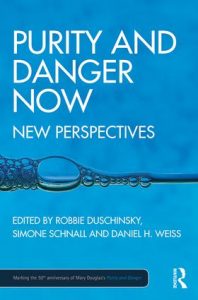Derek Attridge, The Work of Literature (Oxford, 2015)
Because I write a blog called what this one’s called, people sometimes assume I am well on top of the latest reading around the subject. Sometimes it takes me a while to catch up with pretty obvious things, though: this is an example. Attridge’s book follows up his own The Singularity of Literature (2004) and aims to continue its ambitious project to define literature, to understand the way in which it works, to explore how readers should perform their roles best, and to establish its potential as a contributor to our ethical lives.
It has a whole chapter on ‘what literature knows’ (not particularly about your brain, but still). One key point is how ready many scrupulous thinkers are to attribute agency to works of art — they are said to know things, remember things, show things, and so on. We’ve all been there. Attridge addresses a range of philosophical and critical work on the matter. Michael Wood (briefly mentioned on the blog here) is prominent, as is Peter de Bolla, who happens to have an office very near mine. I didn’t remember that in Art Matters (2001) de Bolla asks what Barnett Newman’s painting ‘Vir Heroicus Sublimis’ knows; I wouldn’t have been so alert to the idea back when I read it. I do remember quite a few things, though: it’s thanks to that book that I am listening to Glenn Gould play Bach’s Goldberg Variations even as I write this.
Attridge argues that the knowledge in question is a property of the event of reading and its effects on the reader, rather than something inherent to literature itself. Here is a selection of key moments:
A full engagement with a work of art involves such processes of thought and feeling [i.e. a varied range of responses and questions prompted by it]; and if the work seems to know things that we don’t, it’s because it brings us to the limits of our own understanding, raising questions and making connections that have not hitherto been part of our mental — or physical — universe. (p. 254)
…
Works of art don’t ‘know’ or think, then, though they can involve the viewer, reader, or auditor in a performance of knowing or thinking. If they appear to have these human capacities, it’s because in responding to their alterity, singularity, and inventiveness [these are key words in Attridge’s definition of literature and its qualities and functions] we find our cognitive faculties engaged and tested; our familiar maps prove inadequate, and we move into new and strange territory. When Wood says, as I noted earlier, ‘What literature knows, what a novel or poem or play knows, is strictly, unfiguratively, what I now know before I read the text’, I’m tempted to correct him: what makes us want to say that literature knows is the experience of challenge or discovery that makes us different after reading the text.
…
We act out our knowing, our wanting to know, our wanting to know what it’s like to know or not to know; or rather these things are acted out in the experience that is the event of the artwork. If we are different after this experience, it’s not because we have added to our store of knowledge, it’s because, in gaining access to the work’s alterity, singularity, and inventiveness, we’ve discovered new ways of knowing (and perhaps new ways of not-knowing). Ascribing to works of art the capacity to think or to know (or to smile) is one way of registering metaphorically that process of discovery — or rather of continual discovering, since we don’t have any treasure to show when we stop listening or looking or reading. And that, of course, is why we go on doing it. (p. 258)
In some ways, this works pretty well for me. I recognize this way of describing the value of literature as dynamic, situational, repeatable, and rewarding in that it modifies the reader’s thinking. And yet it seems at odds with one of the ways I’ve been thinking about literature in this blog, as a store of knowledge about the mind that has been built up over time as the result of the efforts of writers who, without necessarily knowing it, were passing on the fruits of their observations and hypotheses. By ‘store’ I don’t mean something so tangible that it simply does not need the ‘event’ of attentive reading that Attridge describes. On the other hand, I am suggesting something that has a bit of tenacity, something to which literary people can point and say to the sceptical ‘look, see what we have here’.
E-mail me at rtrl100[at]cam.ac.uk
